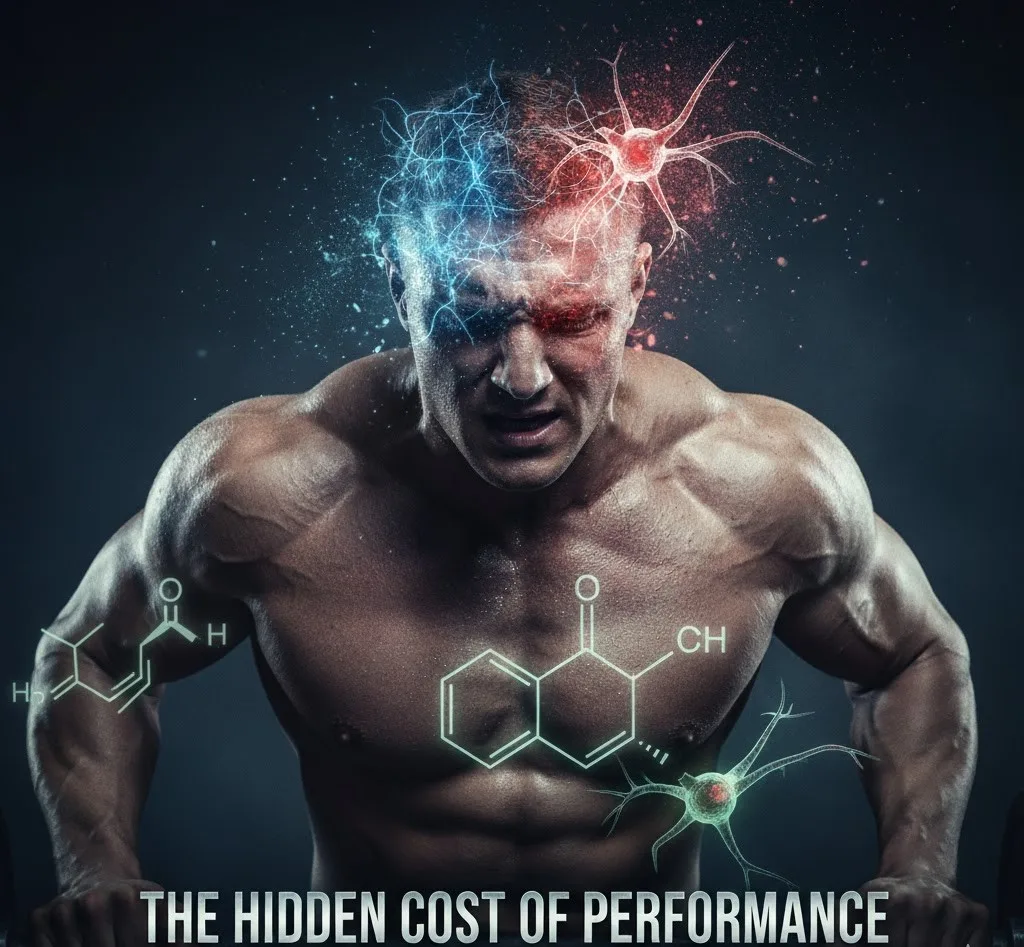The pursuit of peak athletic performance often pushes the limits of human biology. While the risks of musculoskeletal injury are well-known, an analysis of cellular pathways suggests that the use of performance-enhancing drugs, particularly anabolic steroids like Nandrolone, may pose a profound and often overlooked threat to the central and peripheral nervous systems. The consequences could extend far beyond temporary gains, leading to long-term neurological dysfunction.
The Chemical Link: Nandrolone and the Nervous State
The core of this neurobiological concern lies in a mechanism that destabilizes critical elements of neural health. The translated analysis highlights a two-pronged attack on the nervous system, with the synthetic steroid Nandrolone cited as a significant example.
Nandrolone is a powerful anabolic-androgenic steroid (AAS), notorious in professional sports for its muscle-building properties. However, its chemical activity is not confined to muscle tissue. The analysis suggests a pathway where its influence affects:
-
MUTSOD1 Gene Regulation: The mechanism involves impacting the activity of the MUTSOD1 (Superoxide Dismutase 1) gene. This gene is crucial for managing oxidative stress—the imbalance between free radicals and the body's ability to detoxify them. Dysregulation of MUTSOD1 is associated with compromised motor neuron survival and, consequently, a measurable reduction in the efficiency of both the central and peripheral nervous systems. For an athlete, damaged motor neurons directly translates to impaired muscle control, coordination, and strength over time.
The Neurobiological Pathway of Decay: Apoptosis and NGF
Beyond direct gene influence, the primary neurobiological insult is described as a disruption of essential signaling pathways, leading to the programmed death of nerve cells.
GABAergic Disruption and Apoptosis
The key driver is a change in the activity of GABAergic neurotransmitters. GABA (gamma-aminobutyric acid) is the main inhibitory neurotransmitter in the nervous system, responsible for calming brain activity. Disrupting the GABAergic system throws the delicate balance of neural excitation and inhibition into chaos. This imbalance, often leading to excitotoxicity, triggers apoptosis—the process of controlled, programmed cell death. When neurons undergo mass apoptosis, it causes irreversible damage to the neural architecture.
The Crucial Role of Nerve Growth Factor (NGF)
This cellular decay is compounded by the suppression of the Nerve Growth Factor (NGF). NGF is a type of protein, or neurotrophin, that is necessary and essential for the differentiation, growth, and long-term survival of nerve cells. The analysis posits that the GABAergic changes and resulting apoptosis are accompanied by an adverse change in the gene expression that produces NGF.
In essence, the steroid-driven pathway not only triggers the self-destruction of neurons but also removes the protective and restorative factor (NGF) needed to help healthy neurons survive and repair themselves.
Implications for the Athlete: Long-Term Neurological Risk
For athletes relying on the highest level of neural function, the consequences of this mechanism are severe:
-
Motor Neuron Disease Risk: The link to MUTSOD1 and motor neuron survival echoes pathways observed in serious neurological disorders. While AAS use might not directly cause conditions like Amyotrophic Lateral Sclerosis (ALS), it can accelerate or exacerbate the underlying cellular vulnerability.
-
Permanent Performance Decline: The long-term loss of motor neurons and reduced CNS/PNS efficiency means an athlete’s peak performance is fundamentally unsustainable and ultimately compromised, even long after the drug use ceases.
-
Cognitive and Behavioral Changes: The disruption of the inhibitory GABA system is also implicated in mood swings, aggression ("roid rage"), anxiety, and potential cognitive impairment, adding another layer of risk to an athlete's career and personal life.
The cellular mechanisms described serve as a stark warning: the performance-enhancing effects of drugs like Nandrolone come at the expense of core neurological stability. For athletes, the pursuit of temporary physical superiority may carry the hidden and potentially irreversible cost of their long-term brain and spinal cord health.

